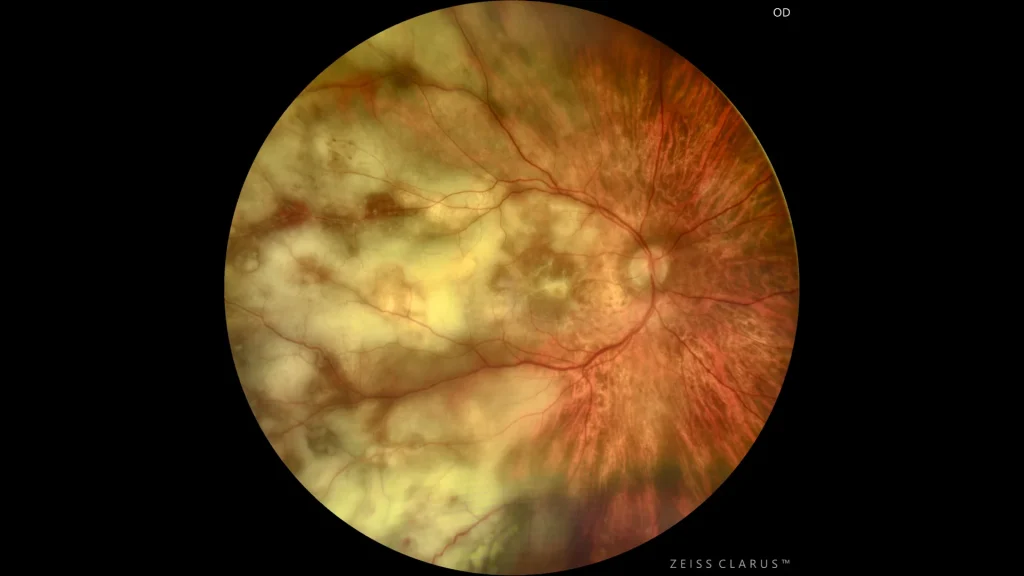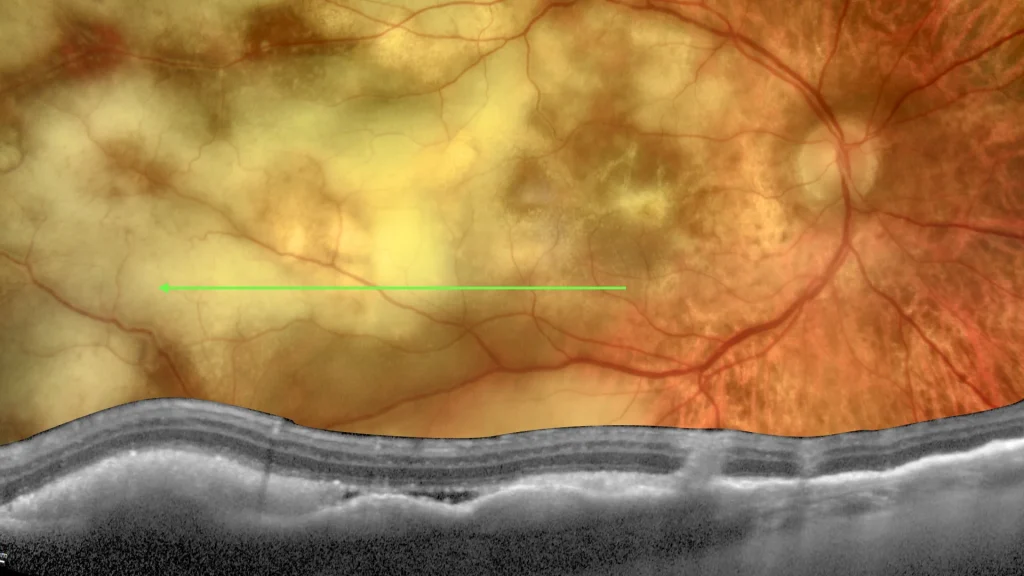Vitreoretinal lymphoma
Description
Vitreoretinal lymphoma is a rare and aggressive form of non-Hodgkin lymphoma that affects the vitreous and retina of the eye. This type of lymphoma is a manifestation of central nervous system (CNS) lymphoma and may occur primarily in the eye or as part of a systemic disease. Typical symptoms include blurred vision, photopsia (flashes of light), floaters, and progressive vision loss. Ophthalmoscopy reveals malignant cells in the vitreous and yellowish subretinal lesions.
The diagnosis of vitreous-retinal lymphoma is confirmed by cytologic analysis of vitreous humor obtained by vitrectomy, along with immunohistochemical and flow cytometric studies to identify specific markers of lymphoma. Optical coherence tomography (OCT) imaging and fluorescein angiography may help assess the extent of lesions and their activity.
Treatment includes intravitreal chemotherapy, ocular radiation therapy, and systemic chemotherapy, depending on whether the lymphoma is confined to the eye or has spread to the CNS. The most common agents used in intravitreal chemotherapy are methotrexate and rituximab. The prognosis of vitreoretinal lymphoma is guarded, with high recurrence rates and a significant risk of CNS involvement, necessitating close, multidisciplinary follow-up.
Comments
This patient, after 2 years of treatment for vitreoretinal lymphoma, ended up developing CNS lymphoma. Tests- Clarus 700 Wide Field Retinograph
- Color: Extensive infiltration of a yellowish subretinal material
- OCT SD Heidelberg Spectralis.


